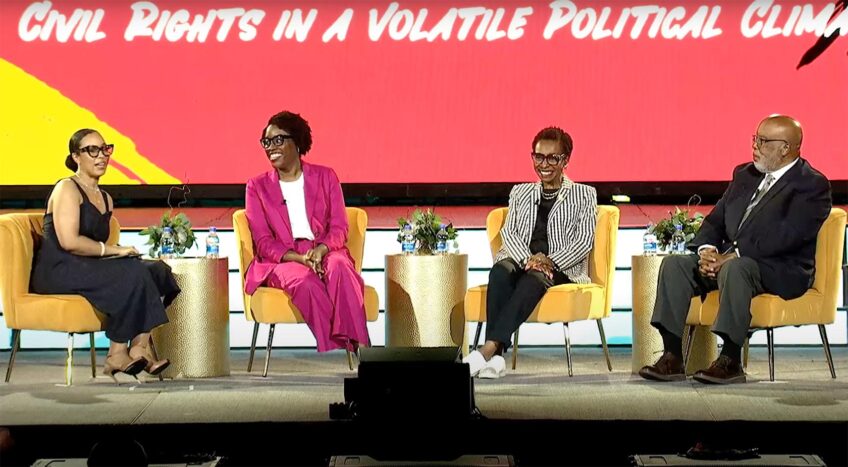Art Works – Boston’s creative economy
Creative and cultural business and industry is critical to the future of Boston's economy

The creative economy in and around Boston has deep roots in traditional arts, but also nurtures new and up-and-coming sectors that will usher the creative industries into the future. Creative minds and concepts now boost a market that many believe already is, and will become more so, a driver of Boston’s evolving economy.
That’s why Boston’s leaders want the city to become a creative economy hub and are making the moves necessary to make it happen.
Last fall, Mayor Martin Walsh appointed Julie Burros as the first Chief of Arts and Culture in over 20 years to create a “cultural plan” that will outline a strategy to keep the creative sector active and vibrant.
Burros had a similar assignment in Chicago, and the city is banking on that experience to get the job done here. To help move the process along, Boston Chief of Economic Development John Barros has been charged with working with Burros to help fortify the city’s creative economy. That could very well give Boston a leg up on its efforts.
Burros and Barros aren’t starting with a blank canvas. Boston has a long history and solid reputation in art, theater and music, as well as architecture, design, culinary arts and creative tech innovation. They’re co-chairing The Greater Boston Creative Economy Network, which will pool the brainpower of leaders throughout the metropolitan area, calling, too, upon organizations such as the Massachusetts Artists

Author: Courtesy Stull & LeeArchitect David Lee of the Roxbury firm Stull & Lee.
Leaders Coalition to think about ways that the region can best support the growth of the creative economy.
“There is a robust creative economy here in Boston and in the Greater Boston area,” Barros told Banner Biz. “It has great potential to grow.”
“It is critical to the growth of our economy,” he added.
Barros’ assignment illustrates Mayor Martin Walsh’s commitment to helping the creative economy grow. But the road ahead is daunting.
Challenge number one involves a definition of the creative economy, since it incorporates everything from a solo artist making and selling paintings to urban planners designing green space in city neighborhoods to mobile app designers.
In particular, growing technological innovation throughout Boston muddies the waters a bit as to whether something like robotics design is part of the technology sector or falls under the creative economy label.
Burros said it can be a little of both.
“Artists and creatives have hybrid practices that don’t fall into any sort of bucket,” Burros said.
They have needs that merge, crossover and overlap. Barros’ discussion of the creative economy may include anything from a jewelry maker to a documentary filmmaker, but he points out as a business model they still have a product they are trying to get to consumers — that part is nothing new.
“These businesses have the same need as other business,” he said.
That’s what makes a cultural plan so important because Burros can talk to representatives from different sectors and professions within the creative economy to find out what exactly their needs are and what the city can do to help them succeed.
The hope is for an outcome that erects some sort of lasting infrastructure, including access to capital, strong networking connections and, perhaps most importantly, affordable workspaces.
That’s why the Fairmont Innovation Lab is garnering so much excitement amongst creative economy evangelists: it represents a support vehicle that responds to multiple needs.
Innovation lab
Similar to the startup accelerator or incubator model that has fueled growth in the startup tech industry so successfully — in Boston and throughout the country — the Fairmont Innovation Lab provides workspace and business development assistance to entrepreneurs working in the creative space.
Liora Beer, executive director of ArtMorpheus, which oversees the Fairmont Innovation Lab, said it will provide artists and creative entrepreneurs the kind of business development that Barros is calling for, which she admits is sorely needed.
ArtMorpheus, founded in 2009, provides programs and training to help artists manage the business side of their work, from record keeping to taxes to legal services to branding and marketing. There will be similar types of programming at the Fairmont Innovation Lab but with a little more of a slant toward the development of startup companies that can commercialize creative innovation.
Oftentimes, the hard part for many artists and creative innovators is not coming up with ideas or innovative concepts. The hard part is figuring out how to make a living out of it.
Beer believes the Fairmont Innovation Lab can make this part easier.
“What we want to do at the lab is create serial entrepreneurs,” Beer said. “Even if something fails we want them to take that learning and put it into the next company.”
She has little doubt of the value of such efforts. To her the creative economy and its contribution to the Boston economy often is overlooked, but it shouldn’t be.
David Lee of the Roxbury-based architecture firm Stull & Lee agrees.
“People have to understand that creative people bring as much to the table from an economic standpoint as any sports team or person that is inventing the new drug,” Lee said. “The creative economy has to be seen as not superfluous but central to our economy.”
The architecture and design industry, for example, is a segment of the creative economy that has a traditional business structure with a defined market for establishing business, and a customer base seeking services. Still, working as an architect or a designer remains an expressive outlet for most.
“It is almost something that people have to do because it is in them to do,” Lee said.
Boston is one of the world’s architectural hubs with the largest number of estimated architects per capita than any other city, and also some of the best architecture and design colleges.
Still, the sector here is not above the need for help from the city to shore it up. Artchitect and design firms were hit very hard by the recession, reports suggest that one-third of all architects in the overall industry lost their job, and while Boston fared better than most places in this regard there is still a need to pump up the industry and certainly look to shore up its future.
In this, Lee, who serves as vice chair of the board of Massachusetts College of Art and Design in Mission Hill, would love to see more resources devoted to educating youth in communities of color, where the idea of one day growing up to be an architect or designer is not a common aspiration.
“If you widen the lens of who is part of the creative economy and what that person looks like, we will not only find there is a lot of cool stuff happening it may encourage some of these young people to pursue these careers in the creative economy,” he said.
Stressing the arts
While art may not have entirely disappeared from schools, Lee certainly is concerned about the way it gets marginalized in many parts of the city’s school system.
“What needs to happen is that arts education has to be stressed and be part of the ongoing curriculum. Kids have to get out and go to museums and visit studios,” Lee said. “Art has to be part of cultural enrichment in the schools.”
Lee would love to see more city-backed or nonprofit-backed creative studio space for developing artists.
Denise Korn, founder of Boston-based Korn Design, also emphasizes the value of exposing Boston’s school students to creative economy careers such as design to bolster the future of the industry, and also increase its diversity.
Since 2003, she has also been running Youth Design a nonprofit organization that works with the city, Boston Public Schools and other nonprofits to give basic art and design training, as well as paid internships in the field to high school students interested in design. Almost 200 students have participated in its programs, with over 80 percent going on to college.
In these efforts she looks to the future of design, as for the present, Korn is enthusiastic about efforts by the city to back the creative economy. She believes that the true success of the creative economy in Boston will rely on collaboration between civic leaders and the industry.
“I think that civic leadership is finally understanding the value of the creative sector,” Korn said.
She also suggests there is great importance in the philosophy of “placemaking,” which refers to the way public spaces are designed and managed, in the discussion of Boston’s creative economy. Tying arts and culture into the identity of Boston as a city and the way it builds its sense of community will have an equally positive effect on the view of the city as a place for creative minds and creative-based businesses to thrive.
Many believe the creative sector generates economic growth, so the more a city supports the creative economy, the more creative-based businesses will want to be there.

Patti Moreno, co-owner of film production company 617 Digital and also known as “Garden Girl” from the HGTV channel’s Garden Girl TV.
TV and film industry veteran Patti Moreno, who lives in Roxbury, points to how the state-created Massachusetts Film Industry Tax Incentive, which went into effect in 2006, impacted her work.
“The creative economy in Boston has definitely been strong and definitely was strengthened because of the tax film credit,” said Moreno, who runs film production company 617 Digital with her husband Robert Patton-Spruill and is also known as “Garden Girl” from the HGTV channel’s Garden Girl TV.
With the credit attracting films to the state, and Boston in particular, many working on the back-end of films have been able to stay and make a living in the city, jumping from one movie project to the next.
Reports from the state show that film companies have paid as much as $50 million annually to state residents working on movie projects since the credit was established.
But the tax film credit is now on the chopping block in Gov. Charlie Baker’s proposed budget for the upcoming year, due to the widespread view that it costs the state hundreds of millions in tax revenue. Many legislators, however, have spoken out in favor of the tax credits.
Moreno admits abolition of the film tax credit is a big concern to her and her colleagues and would be a serious blow to the impact of the film industry in Boston’s creative economy.
“Losing that is going to hurt for a while,” she said.
On the bright side, the growing dominance of digital technology in film and television — particularly Web TV — is opening up new opportunities for business growth.
Moreno calls digital video production for the Web a whole new industry that most never dreamed of.
“I didn’t go to college saying, ‘I’m going to make Web videos for a living,’” she said. “Now, it is just this hugely sought-after skill.”
This article appears in the May issue of Banner Biz. Click here to read issue.







